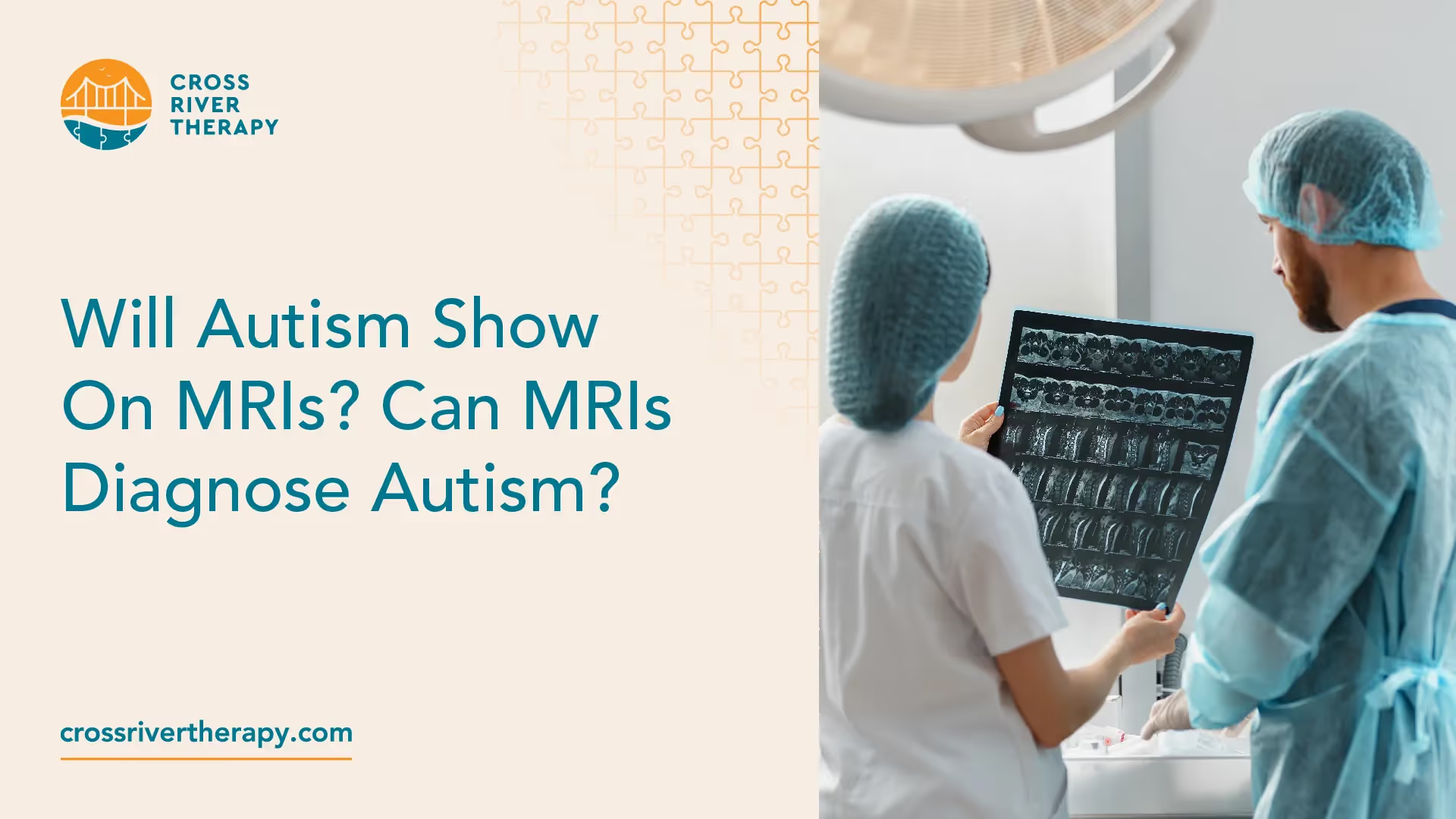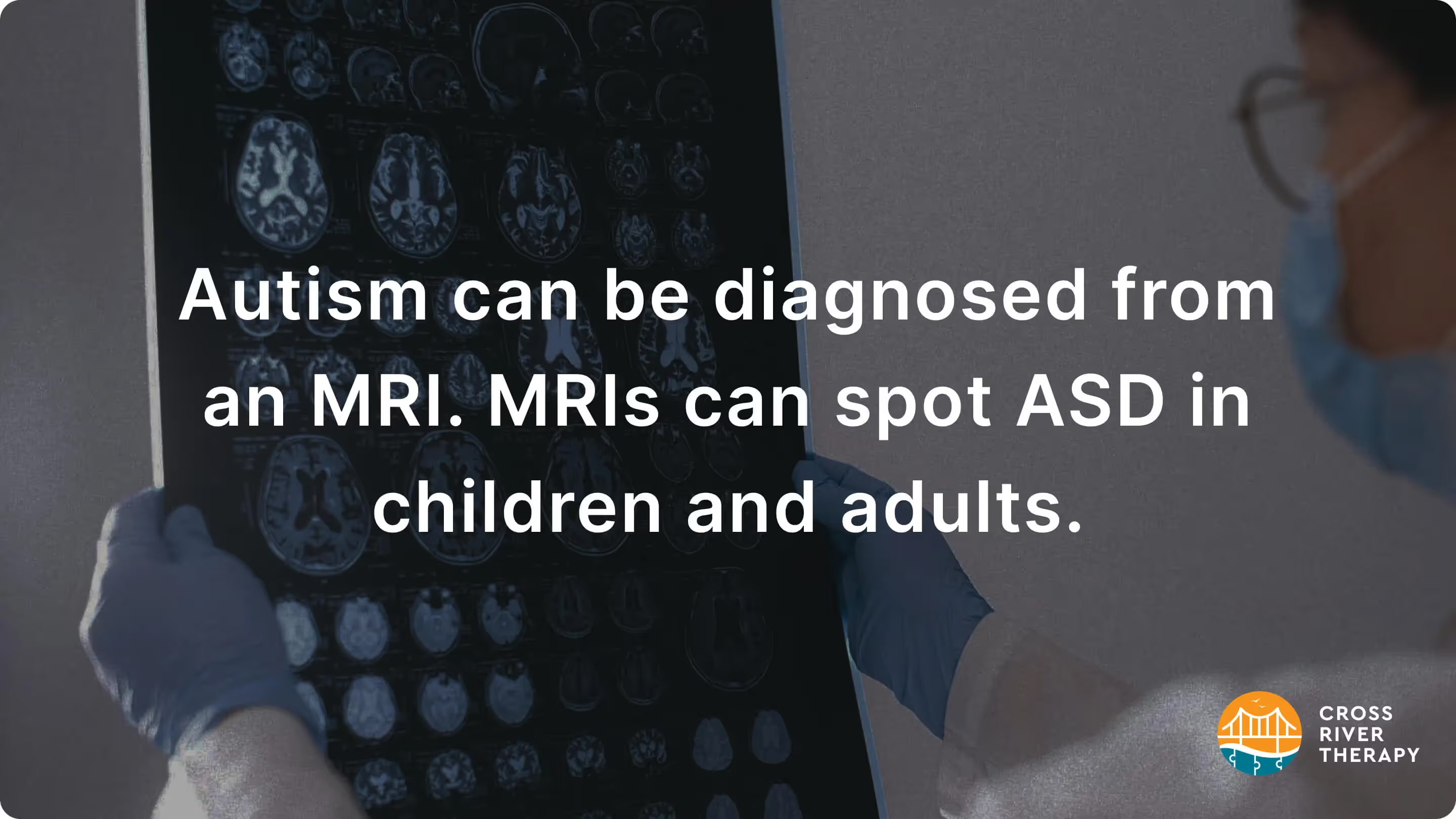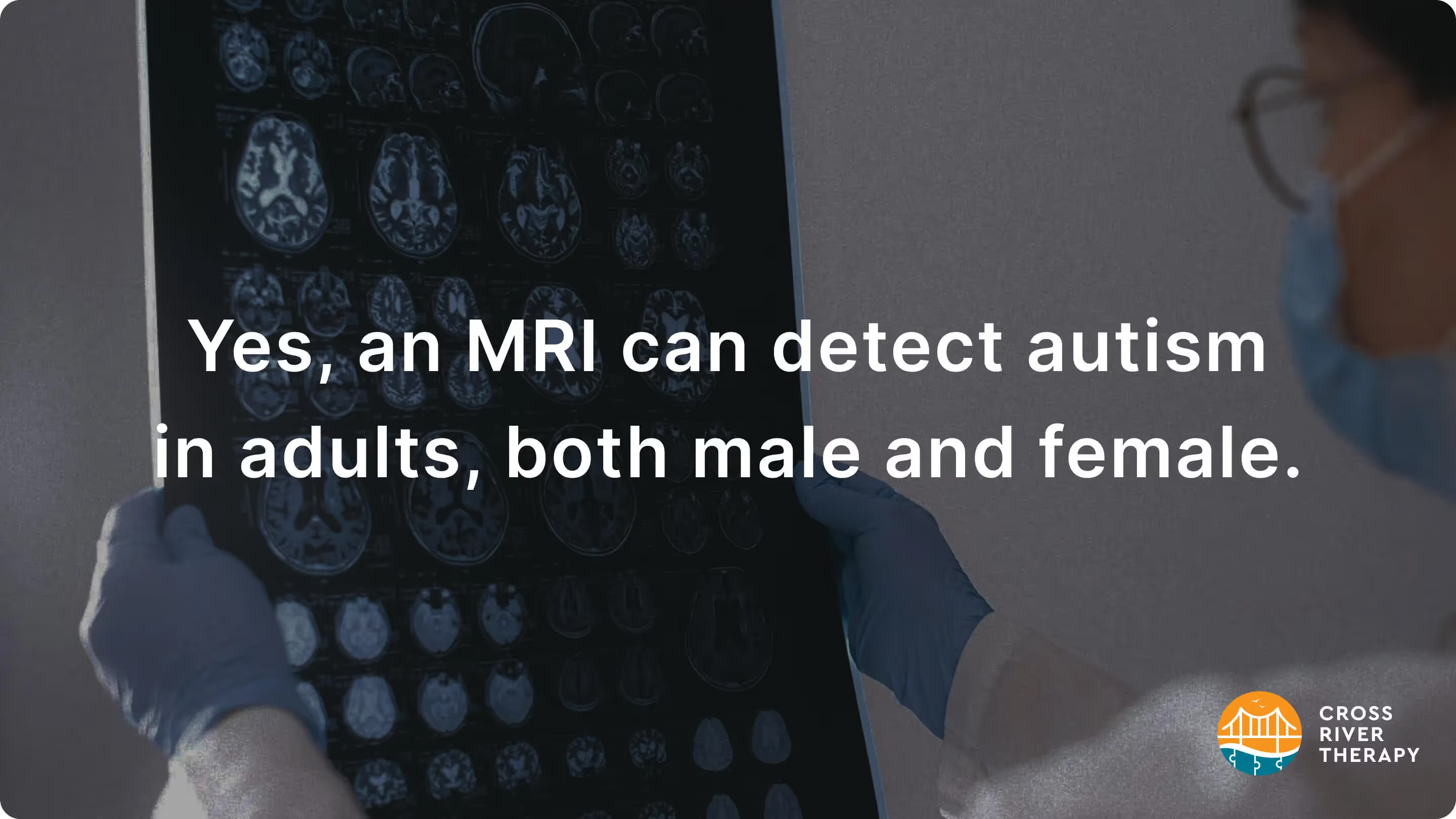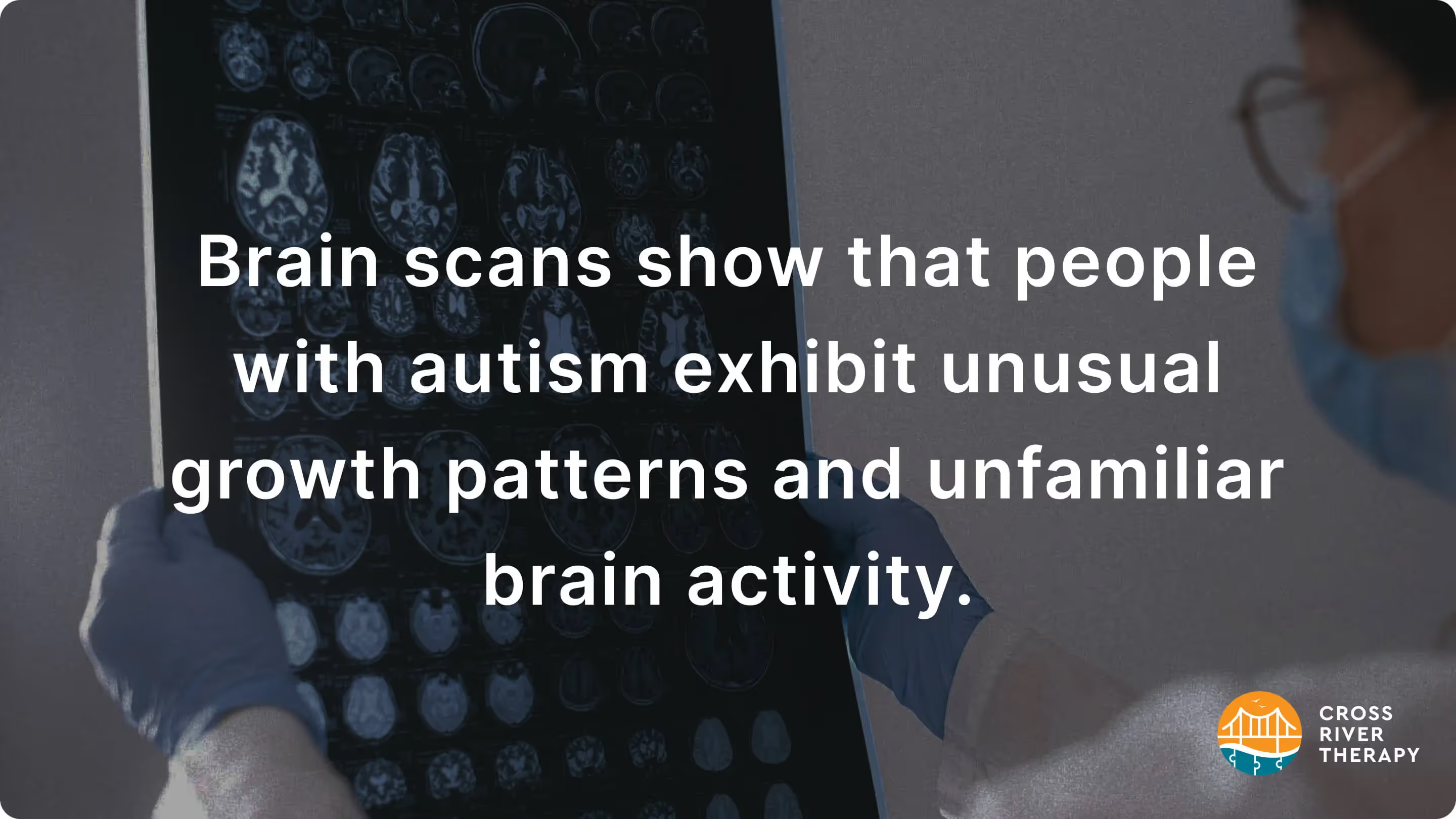Will Autism Show On MRIs? Can MRIs Diagnose Autism?
Today we’ll cover what research shows about autism and MRIs.
Key Takeaways
- Researchers say MRI scans can identify differences in the brains of fetuses that could be early signs that a child with have autism.
- They say that scans can help give an autism diagnosis earlier and allow parents to begin intervention programs for the child at a younger age.
- An MRI can detect autism in both children and adults.

Can Autism Show On MRIs?
MRIs are relied upon to pinpoint signs of brain disorders in people throughout the country for many years. Its full name is Magnetic Resonance Imaging and was first used on patients in the latter half of the 1970s. Both medical experts and patients have gained much from MRIs since that time.

Today, images are more detailed than ever before. Upgrades and improvements are rapidly made, helping doctors learn more about different sorts of ailments that impact the human brain. This includes people with an autism diagnosis. Autistic patients have been detected early by the analysis MRIs lend to doctors.
This had been done since the early days of the machine.
The information taken is also helpful to scientists managing clinical observations. Thanks to regular use in different medical professions, the machine itself gives important data showcasing the brain's characteristics that are likely to cause autism.
Can An MRI Detect Autism In Babies OR Children?
There's a 20% risk of the infant brothers and sisters of a child getting autism. This risk is greater than it is for the rest of the children.
Scientists think that MRIs can find out what babies are at a greater chance of getting it. They claim that symptoms showing behavioral conditions are better recognized with the use of the machine.
If so, interventions can begin quicker and with better improvements with less therapy later on in their life.
In 2017, scientists shared their reports that revealed MRIs identify 80% of infants with a behavioral condition. Later on, that percentage of children went to be diagnosed with ASD after just two years old.
Can An MRI Detect Autism In Adults?
Although an MRI can detect autism in adults, its use as an effective tool for children remains ongoing. Medical researchers have been working on new ways to detect autism as a diagnosis for adults.

Fast brain scans have been built where markers closely associated with autism are shown in as little as 15 minutes. Using this method, the rate of accuracy is 90%.
If such innovations are put into place globally, It might also become a routine way to test out younger children sometime soon.
The same group of researchers made use of a brain scanner to get photographs of gray matter, a crucial part of the central nervous system that lies in the exterior of the brain.
A specific way of taking the images was done to develop a three-dimensional photo that reveals the brain's viscousness, shape, and structure.
Together, this procedure of gauging the brain for neurological signs can show where the root of autism comes from, as the disorder is a brain disturbance.
Through further studies of the brain's gray matter, these scientists could look at biological indicators instead of behavioral traits to gather if someone has autism or not.
What Do Brain Scans Of Autistic People Show?

Overall, brain scans show that people with autism exhibit unusual growth patterns and unfamiliar brain activity. There exist specific characteristics for making an autism diagnosis that may be difficult for some medical experts. Even today, there aren't any physical examinations capable of accurately detecting autism.
Instead, physicians utilize interviews with parents, the behavior of patients, and their history to find out if a diagnosis is needed.
However, the studies done indicate that brain scans will likely become the primary way for doctors to make an autism diagnosis in the future. The technology and understanding of it could advance to the level of it being detected before any symptoms become present.
Another neuroimaging study gauged results in children at varying levels of risk for autism.
They wanted to find if any connections existed within a two-year diagnosis and indicators shown postnatal and immediately following. Of the children that did receive an autism diagnosis, alterations in the brain were noted. Present were areas of enlargement along the brain's surface. Overgrowth was also seen.
The cortical surface area was extended in infants aged from 6 months to 1 year old. These expansions occurred before their volume expanded and was observed in high-risk babies from 12 to 24 months of age.
They found a connection between volume growth of the indication of the brain and behavioral issues.
Results from this study reveal that brain alterations early in life happen in the period when autism's indications become known.
In a different study, there was a concept of brain development and behavior that might help doctors know the brain's workings and behavior processes when autism exists at an early age.
These studies show that boosts in certain neurological cells, along with the expansion of the brain itself, may indicate patterns in brain development in the first year of a child's life. Kids with these conditions have a high chance of having ASD.
Such changes in the brain happen before symptoms are spotted, typically in a span where motor development and attention problems are noted. Together, the brain alterations cause varying outcomes in its growth.
Likewise, volume overgrowth is closely linked and can block neural connections attached to indicators of ASD.
Furthermore, these can be spotted with clarity in two-year-old children. In short, interventions could be refined through more studies on brain scans. They help raise knowledge that researchers have about autism, with better timing and detection of its severity.
Can A Neurologist Treat Autism?
There are neurologists specifically trained to examine children. They give treatment to infants, preteens, and adolescents in the form of diagnoses, treatment, and the management of brain conditions. Children of the spectrum are among them. Neurologists may increasingly have a vital role in finding autism in young children.
They're taught to narrow the gap between symptoms present in autism and disorders of a different kind. Many take part in neurological examinations and tests meant to gauge a child's motor abilities.
The treatment and cause of ASD aren't fully understood, however. Kids harboring brain development issues would highly benefit from functional neurology as well. It's a useful alternative to a child getting treatment through the use of medicine.
People with different disorders, including ASD, ADHD, and even kids with learning disabilities have problems that can be solved with multiple treatment options. Therapists within the field of neurology work with and study the brain, its functions, and the nervous system as a whole.
The brain's inner workings are the root of which autism research studies. It's been this way for many years but other factors must be studied, such as the environment and genetics of patients.
When compared to the general public and those with ASD symptoms, major differences are shown in the structure, function, and electrical characteristics of the brain.
The structure of the cerebellum conveys changes in autistic patients, a recent discovery by medical professionals. Also called neuroinflammation, it impacts the brain's neural connections.
In most research done, changes in the brain's neural processes are easy to see between autistic individuals and anyone with few or no symptoms. It's conspicuous when both groups attempt to perform tasks ranging from facial recognition to identifying shapes and colors.
Autism is now characterized by the number of brain disturbances presented.Autism isn't a sickness, so there aren't any pharmaceutical drugs authorized for its treatment.
Therefore, its treatment lies in therapy. There are where interventions take place, where earlier treatment results in faster improvements to a patient's behavioral condition.
Early treatment also helps social growth. Functional neurologists help boost the function of humans. For them to do this requires treatments that are understood and well-studied.
Some of these are visual, vestibular, and visual management. Neuroanatomy is another of importance. These are rehabilitating and fulfilled by boosting cognition. Neurologists specializing in children give treatment for diseases that are present in the brain. They also work with many autistic children
How Does A Neurologist Check For Autism?
Tests that involve analyzing blood and other physical features will not help with an autism diagnosis. Psychologists typically do so by studying the history of the patients they see, including a thorough examination of the way they behave.
Observation of behavior is the single most relied-on method for reaching an autism diagnosis, though this may change in years to come. Doctors in the field of neurology make examinations of indicators that are closely linked to autism. They meet the standard laid out in the DSM, a publication used for diagnosing mental disabilities.
Health insurance businesses mandate testing for autism based on observation listed in the manual. Motor functions are also relied upon by neurologists to reach a status of diagnosis.
When done, they can be gauged without subjectivity. Varied deficiencies in motor abilities like posture, gait, and the ability to coordinate are considered to be repetitive behaviors known to exist within ASD.
There are also behaviors classified as repetitive, identifiable in kids through gauges that are validated. High-functioning autistic kids are better assessed through more practical examinations.
Can MRIs Diagnose Autism?
Scientists and researchers alike posit that MRI scanning can find changes in the brain, specifically as it relates to scanning babies. One study done in 2017 shows that MRIs help in achieving diagnoses at earlier ages.
Still, more data and studies are necessary to understand if physical changes exist in every child with autism. Additionally, tests must be accurate so that autism isn't diagnosed incorrectly.



